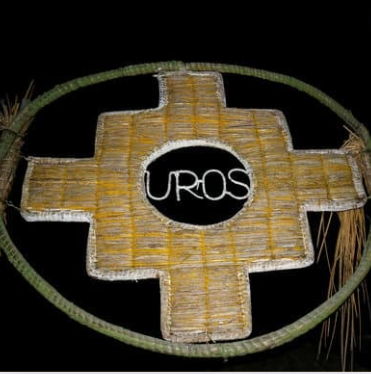Unraveling the Mystery of the Chakana: The Andean Cross
Let's dive into the fascinating world of the Chakana, also known as the Andean Cross. If you've ever traveled to Peru or browsed through Andean art, you've probably seen this intriguing symbol. But what does it really mean? For us at The Warrior Sanctuary, we knew we had found a home for our Ecuadorian retreat when we pulled into the property and right there on the gate was the Chakana! Talk about signs, symbols and synchronicities!
Let’s break it down in a way that’s easy to understand and appreciate.
What is the Chakana?
Chakana symbol welcomes all to Amaroo Sanctuary, Mindo Ecuador
The Chakana is a stepped cross, typically with a hole in the center. It’s a key symbol in the Andean cosmovision, representing a variety of spiritual and philosophical concepts. Often referred to as the "Inca Cross," this emblem is much more than a geometric shape; it’s a profound representation of Andean culture and beliefs.
The Shape and Its Significance
The Chakana’s design is like a square cross with three steps on each arm. Here’s a quick rundown of its elements and what they symbolize:
Three Levels of Existence:
Hanan Pacha (Upper World): This represents the heavens or the spiritual realm where deities and celestial beings reside.
Kay Pacha (Middle World): The earthly realm where humans, animals, and plants live. It’s the world of our daily lives and physical existence.
Ukhu Pacha (Lower World): The underworld or the realm of the ancestors and spirits. It’s a place of inner reflection and the subconscious.
Four Cardinal Points:
The Chakana also represents the four cardinal directions (north, south, east, west), symbolizing the balance and harmony of the universe.
Central Hole:
The hole in the center is thought to symbolize the axis mundi, the center of the world connecting the three realms, often considered a portal for shamanic journeys.
Cultural and Spiritual Layers
The Chakana isn’t just about the physical world; it embodies deep spiritual meanings:
Unity and Duality: The Chakana reflects the Andean understanding of unity and duality. Life is seen as a balance between opposites: light and dark, male and female, life and death.
Integration with Nature: Andean spirituality deeply respects nature. The Chakana represents this connection, emphasizing the importance of living in harmony with the natural world.
Ethical Guidelines: It’s also seen as a guide for ethical living, promoting values such as love, labor, and knowledge (referred to as the three Andean laws: "Ama Sua" (Do not steal), "Ama Llulla" (Do not lie), and "Ama Quella" (Do not be lazy)).
Why is the Chakana Important Today?
In a modern context, the Chakana reminds us to seek balance in our lives. As we navigate the hustle and bustle of contemporary existence, it encourages us to stay connected to our roots, honor the natural world, and strive for harmony between our physical and spiritual selves.
How to Incorporate the Chakana into Your Life
Mindful Living: Use the Chakana as a reminder to live mindfully, respecting the balance of nature and our place within it.
Cultural Appreciation: Embrace the rich cultural heritage of the Andean people. Whether through art, travel, or learning, appreciating this symbol can deepen your understanding of another way of seeing the world.
Personal Reflection: Meditate on the Chakana’s layers of meaning to explore your own spiritual and philosophical beliefs.
Inspired by the profound symbolism of the Chakana? Dive deeper into the heart of Andean spirituality at our Sanctuary in Ecuador—Amaroo. Experience the energy of this sacred land and connect with the ancient wisdom that continues to guide us today.
So, the next time you see the Chakana, you’ll know it’s not just a beautiful pattern. It’s a symbol loaded with ancient wisdom, urging us to harmonize our lives with the world around us. Pretty cool, right?




